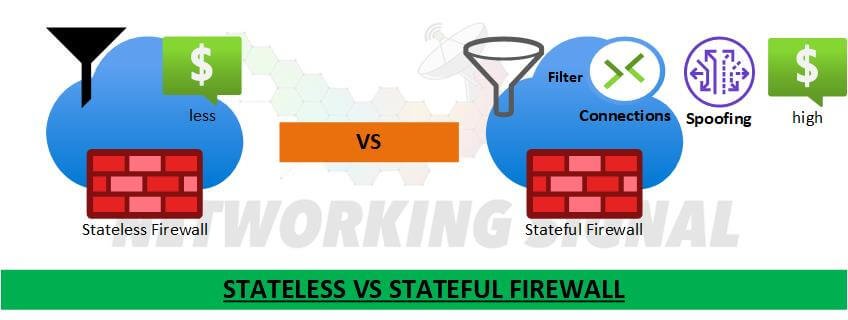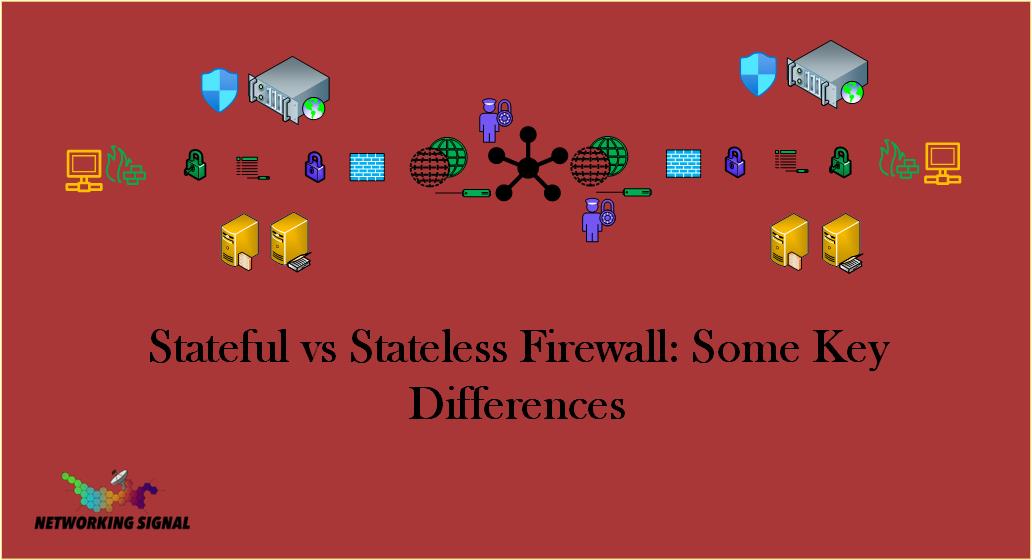The debate on stateful versus stateless firewalls has been a long and hard-fought one. The terms “stateful” and “stateless” refer to how the firewall treats traffic. A stateful firewall keeps track of every connection passing through it and makes sure that each packet is part of an existing connection. A stateless firewall, on the other hand, simply looks at each packet individually and makes a decision based on its own merits.
Stateful vs Stateless Firewall: Key Points
Here are the key points to remember about stateful and stateless firewalls:
- A stateful firewall keeps track of every connection passing through it, while a stateless firewall does not.
- Stateful firewalls are generally more secure than stateless ones, but they can also be more complex and difficult to manage.
- Stateless firewalls are usually simpler and easier to manage, but they may not be able to provide the same level of security as a stateful firewall.
- It is possible to use a combination of stateful and stateless firewalls to create a more customized and effective security solution.

Which Firewall is used for Small businesses?
For small businesses, the best firewall is usually a stateful firewall. Stateful firewalls are more secure and can provide better protection against attacks. However, they can also be more complex and difficult to manage. If you are not sure which type of firewall to use, it is always a good idea to consult with a security expert.
Which Firewall is used for Enterprise?
For enterprises, the best firewall is usually a combination of stateful and stateless firewalls. This allows for a more customized and effective security solution. However, it is important to note that no matter which type of firewall you use, it is always a good idea to consult with a security expert to make sure that you are using the best possible solution for your needs.
Check some list of the best Firewalls for enterprises and small businesses:
- Palo Alto Networks PA-220
- SonicWall TZ350
- Fortinet FortiGate 60E
- WatchGuard Firebox T35
- Sophos XG 125W Wireless
- Zyxel Next Generation VPN Firewall
- Cisco Meraki MX64W
- Barracuda NextGen X-Series Firewall
- Check Point 700 Appliance
- Huawei USG6370-BDL-ACSonicWALL TZ300
- WatchGuard Firebox T15
- Sophos XG 135
- SonicWALL NSA 3600
- Meraki MX84Cloud-Managed Security Appliance
- WatchGuard XTM 1050
How Does Stateful Firewall Work?
Here is the process of how a stateful firewall works:
- A stateful firewall keeps track of every connection passing through it.
- The firewall uses a variety of criteria to determine whether a packet is part of an existing connection.
- If the packet is part of an existing connection, the firewall allows it to pass.
- If the packet is not part of an existing connection, the firewall drops it.
How Does Stateless Firewall Works?
Stateless firewalls do not keep track of connections. Instead, they simply look at each packet individually and make a decision based on its own merits. Packet filtering is the most common type of stateless firewall. With packet filtering, the firewall looks at each packet and decides whether to allow it through based on a set of rules.
How to Build Connection in Stateful Firewall?
In order to build a connection in a stateful firewall, the following steps must be taken:
- The client sends a request to the server.
- The server responds to the request.
- The client sends an acknowledgment to the server.
- The server sends an exposure to the client.
At this point, the connection is considered to be established. The stateful firewall will now allow all packets that are part of this connection to pass through.

